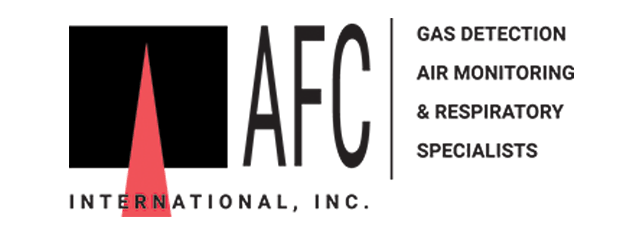Industrial Dust Monitors: Enhancing Air Quality Control and Environmental Compliance
In the bustling industrial arena, the invisible threat of dust and particulate matter can often be overlooked. Ranging from the size of a speck to nearly imperceptible particles, these matter poses significant risks to both human health and our environment. Air quality control and environmental compliance in industrial facilities are paramount, with dust monitors playing a pivotal role. This article delves into the intricacies of dust and particulate monitors, unraveling their functionality and exploring their diverse applications.
Key Takeaways
- Dust monitoring is important for maintaining air quality and ensuring the health and safety of workers.
- Dust monitors work by measuring the concentration of airborne particles in the environment and providing real-time data on dust levels.
- There are different types of dust monitors, including optical, gravimetric, and direct-reading instruments, each with its own advantages and limitations.
- Using dust monitors can help companies comply with regulations, protect workers from exposure to harmful dust, and prevent equipment damage and downtime.
- When choosing a dust monitor, consider factors such as the type of dust to be monitored, the monitoring environment, data accuracy and reliability, and ease of use and maintenance.
Understanding Dust and Particulate Monitors
Industrial workspaces often deal with dust and particulates, which, if not properly monitored, can create serious health and safety concerns. Enter dust monitors, the vigilant guardians of air quality. These devices come in various forms, from handheld units for on-the-go analysis to robust systems for continuous monitoring. Key features include the ability to detect a plethora of villains like dust, mold, and smoke, and measure their concentrations, arming professionals with the data needed to combat air quality issues.
From the optical technology that plays with light backscattering to the latest inductive electrification methods, these monitors are critical in industries such as agriculture and manufacturing, where they alert to a filter’s distress signal. Utilizing these devices helps industries not only protect their workforce but also adhere to environmental standards, ensuring a breath of fresh air in the battle against industrial pollution.
Applications of Dust and Particulate Monitors
Dust and particulate monitors are the environmental sleuths of industrial operations, playing a crucial role across a diverse range of industries. In the agricultural sector, they keep an eye on the flow of grains in pneumatic systems, ensuring operations run smoothly. They are equally important in the food industry, where monitoring sugar particles is not only a matter of quality but also safety. These devices are also pivotal in construction and mining, where they help companies stay within the good graces of regulatory compliance by providing real-time data on particulate levels.
Within industrial facilities, dust monitors serve as an early-warning system, detecting filter breakage and helping to prevent potential environmental incidents. Dust monitoring devices offer real-time data and remote monitoring to enable swift action, and minimize downtime and environmental impact.
Advancements in Dust Monitoring Equipment
Dust monitoring technology is buzzing with pioneering advancements that are revolutionizing the way we ensure air quality control and environmental compliance. Modern dust monitors are now equipped with cutting-edge filtration technologies that capture finer particles and tout longer filter life, making them more efficient and easier to maintain.
Moreover, the integration of Internet of Things (IoT) and machine learning techniques is a game-changer, enabling real-time monitoring and precise predictions of particulate matter levels. IoT-based systems are now capable of providing granular data on dust concentrations, facilitating proactive dust management in challenging environments like surface mines.
Innovative features such as energy-efficient operational modes and automatic alerts for excessive dust levels exemplify the strides being made. These enhancements not only improve the accuracy of monitoring but also bolster the safety of workers by enabling timely implementation of dust suppression mechanisms.
Conclusion
As we’ve navigated through the swirling dust clouds of information, it’s crystal clear that industrial dust monitors are pivotal for air quality control and environmental compliance. These guardians of the atmosphere offer a buffet of benefits, from safeguarding worker health to ensuring that your business doesn’t run afoul of regulatory standards. Embracing dust and particulate monitors is more than just a regulatory dance; it’s about fostering a work environment where safety and productivity perform a harmonious ballet. By investing in these monitoring maestros, businesses can orchestrate a symphony of clean air that resonates with improved health and a greener footprint on Earth’s stage. So, let’s dial down the dust and amp up our commitment to a pristine, particle-free panorama, ensuring a future where every breath is a fresh encore.
Dust Monitors FAQs
A dust monitor is a device used to measure the concentration of particulate matter in the air. It is commonly used in industrial settings, construction sites, and environmental monitoring to ensure compliance with air quality regulations.
Dust monitors use various technologies such as light scattering, beta attenuation, or laser diffraction to detect and measure the concentration of airborne particles. These technologies allow the monitor to provide real-time data on the levels of dust and particulate matter in the air.
Using a dust monitor can help to identify potential health hazards associated with high levels of airborne particles. It can also aid in compliance with air quality regulations and provide valuable data for environmental monitoring and risk assessment.
There are several types of dust monitors available, including real-time continuous monitors, personal exposure monitors, and area dust monitors. Each type is designed for specific applications and monitoring needs.
Dust monitors are commonly used in industrial workplaces, construction sites, mining operations, and environmental monitoring programs. They are also used in indoor environments to assess indoor air quality and potential health risks.
By providing real-time data on airborne particulate matter, dust monitors can help identify sources of pollution and enable proactive measures to reduce dust emissions. This can ultimately lead to improved air quality and a healthier environment for workers and the community.


